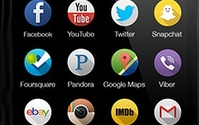 Getting
people to download, let alone pay for their apps, remains a daunting challenge for most developers. A Gartner study earlier this year projected that by 2017, nearly all (94.5%) of downloads will
be for free apps, up from 91% last year. Worse, by 2018, less than 0.01% of apps will be considered a success by their creators.
Getting
people to download, let alone pay for their apps, remains a daunting challenge for most developers. A Gartner study earlier this year projected that by 2017, nearly all (94.5%) of downloads will
be for free apps, up from 91% last year. Worse, by 2018, less than 0.01% of apps will be considered a success by their creators.
Still, people are more willing to pay for some types of apps
than others, a new Nielsen report suggests. That includes games, and apps for reading (books and magazines), listening to music, and watching video. he findings are based on the research firm’s
Mobile App Playbook, which surveyed 3,743 people aged 13 and older who downloaded an app in the last 30 days.
advertisement
advertisement
But even popular games, such as “Angry Birds” have switched to a
freemium model — letting users download apps for free and charging for virtual items or in-app currency — instead of requiring an upfront fee. And among the 10 top-grossing apps in the App
Store last year, only Minecraft ($6.99) was a paid app.
Ad-free social network Ello indicated that it plans to adopt a freemium model by selling premium features to a smaller proportion of
“power users” among its members. Social networks have mostly relied on a free, ad-supported model, so that could prove a difficult path for Ello. But it’s also possible that people
who wouldn’t normally pay for any social networking features may be more inclined to do so simply as a way of supporting Ello’s anti-ad manifesto.
The Nielsen study also looked at
situations where people are most likely to turn to mobile apps. Is most often when they’re alone (70%) or bored (68%). Other instances are when waiting for someone or something (61%), while
watching TV (48%), and right before going to sleep (41%). Those figures reflect smartphone use but the data on tablets is roughly parallel, although a higher percentage (54%) uses apps while watching
TV.
Smartphone users usually download apps in the first place for leisure or entertainment (53%) or a recommendation from a friend (48%). The corresponding figures for tablet owners are 59%
and 44%. The findings underscore the power of word-of-mouth when it comes to app discovery, which is notoriously difficult because of the more than 1 million titles in both the App Store an Google
Play.
While the average smartphone downloader has around 42 apps on their device, the majority (87%) say they use less than 10 apps on a daily basis. More than half (55%) use between one and
four apps, and almost a third report using between five and nine, according to the Apps Playbook.
A separate, more in-depth report from comScore last month showed almost three out of every
four minutes spent with apps is devoted to a user's top four apps.
Nielsen’s cross-platform report for the second quarter showed that apps overall continue to command a growing amount of
consumers’ attention. U.S. adults spent an average of 43 hours and 31 minutes per month connecting with content through an app or mobile Web browser — up from 33 hours and 48 minutes per
month in the year-earlier period.
Among African-Americans and Hispanics, the average monthly time spent is significantly higher -- at nearly 53 hours and 49 hours, respectively.